Silent Eddy Hunters
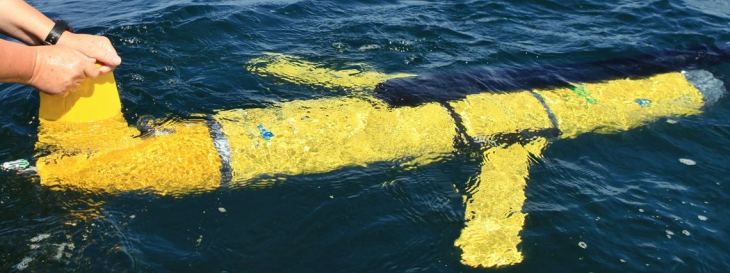
A glider is placed into the water. Image: Suzanna Clark
Large regions with wind parks have been cropping up in the German North Sea for several years. The foundation structures work like gigantic mixing rods that swirl the tidal current. Using underwater gliders, researchers from the Institute of Coastal Research now measure the strength of the turbulence so that they can assess consequences of offshore wind energy development on biological and chemical processes in the sea.
They glide silently through the ocean. They sink deeper and deeper until they reach remote corners of the global seas. All alone and far away from the harbour or a research vessel, they follow their own route. They’re called gliders, these new inconspicuous marine science measurement instruments. Their strength lies in their simplicity. Gliders float with small wings entirely without fuel for days and weeks at a time. They are propelled forward by the Archimedean principle—by changing their mass.
A small chamber that can be filled with water is located in their interior. This makes the gliders heavier so they can drop. The glider can adjust at which angle it descends so that it doesn't simply sink to the seafloor. It thus drops like a sailplane as it approaches for landing. The piston pushes the water from the chamber when it is time to ascend again. The glider becomes lighter and slowly rises through the water like a sailplane when it ascends. The human-sized gliders currently run around 150,000 Euros, which makes them much cheaper than conventional underwater robots. No wonder they are slowly becoming the workhorse of marine research.
Millimetre-sized Miniature Eddies
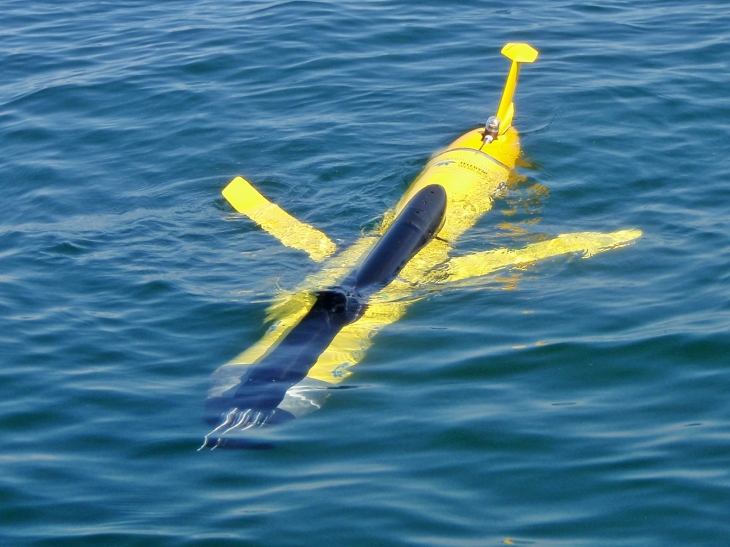
A glider descends, silently like a sailplane. Image: Raimo Kopetzky
Jeffrey Carpenter and Lucas Merckelbach, from the Institute of Coastal Research, are also convinced of the gliders' advantages-– and they have been using them extensively in their research for some time. Carpenter and Merckelbach are on the hunt for a barely perceptible phenomenon in the sea – for miniature eddies, which are only a few centimetres—or even millimetres—in size. As it turns out, the gliders are perfect for sensing these eddies because they work entirely without roaring and vibrating motors and therefore have a particularly delicate sense of touch, so to speak. Some might ask why tiny eddies in the ocean are actually of any interest. Jeffrey Carpenter, however, makes it clear that they are entirely vital.
There are eddies in the seas that can run many kilometres in size, but at their edges, even the largest eddies divide into smaller and smaller eddies like a drop of cream in tea. “The energy of the large eddies is transferred to many small eddies,” says Carpenter, “and how heat, nutrients and oxygen are mixed between different water masses depends on this energy.” By measuring the energy of the small eddies, the researchers can also estimate the mixing potential of the large eddies.
Powerful Mixing Effect
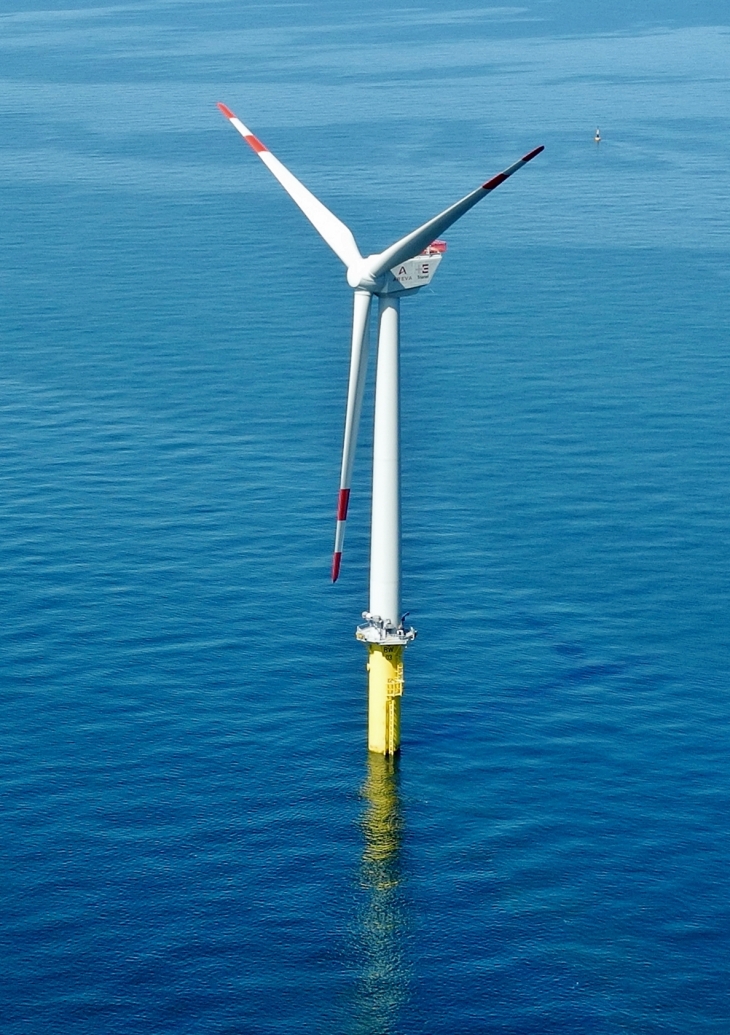
Offshore wind energy parks like these function in the water like gigantic mixing rods. Eddies of several metres in diameter form if the strong tidal current flows along these installations. Image: HZG/ Sabine Billerbeck
Carpenter and Merckelbach have recently been involved mainly with the issue of what impact the many wind turbines in the North Sea will have on the water masses. Expansion of offshore wind energy is progressing at a breath-taking pace—the total power output of installations on the German coasts has tripled between 2014 and 2015 alone. The six-metre-wide wind turbine foundation structures act like gigantic mixing rods. Eddies measuring several metres in diameter form when the strong tidal current flows along these installations. “We mainly want to determine how this mixing effect impacts the stratification of the water masses in the North Sea,” says Lucas Merckelbach. This stratification usually happens in summer. The water at the surface is warm and rich in oxygen. Cold water is found below and contains many nutrients.
Impact on Stratification of Water Masses?
Between the water masses lies what is known as the thermocline, which separates both water layers like a boundary so that they can no longer mix. The thermocline in the North Sea lies at a depth of about twenty metres in summer. The temperature changes by approximately six degrees Celsius at the thermocline within only a few metres difference in depth. Swimmers know of a similar phenomenon in lakes when it is pleasantly warm at the surface, but when swimming, a foot suddenly hits very cold water. Carpenter and Merckelbach have asked themselves to what extent this mixing effect from wind turbines could be disturbing this thermocline or even completely dissolving it.
They have therefore been cruising their gliders several times in the region of wind parks and where future wind parks will stand to measure miniature eddies. They have assessed their measurement data with a computer model with which they can determine how much turbulence increases when more and more wind turbines are erected. “Our first results indicate that the mixing effect could have an impact on the water mass stratification if a third of the German North Sea would be covered in wind turbines,” Carpenter says. And that is exactly what is planned for German wind parks.
Eight Weeks on the Go, Thanks to the Energy Saving Programme
What effects the possible water mass mixing at the thermocline could have is unclear to both of them at this point. The measurement results are still insufficient. Carpenter and Merckelbach therefore wish to send their gliders back into the North Sea to hunt for the miniature eddies. “Our gliders can be out for four to eight weeks at a time,” Carpenter says. “That's terrific because they permanently record data. This wouldn’t be possible with a research vessel—mainly because the gliders also work in deep waters even during rough seas.” The glider surfaces at regular intervals to send its position and its measurement data to the researchers on land via satellite. On the other hand, the researchers can send commands to the glider to, for example, establish a new diving route.
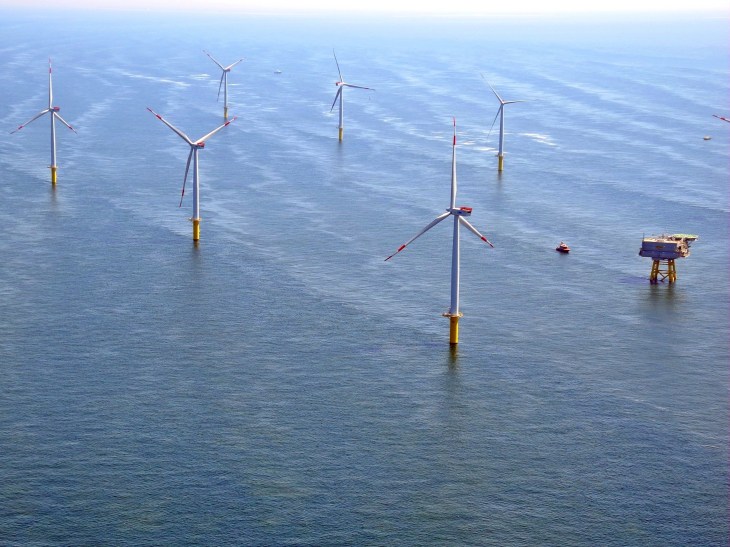
Offshore wind park in the North Sea. Image: Sabine Billerbeck
This continuous use is only possible because the glider is extremely energy efficient. This is because it glides at a speed of only one kilometre per hour through the water. The friction at this snail’s pace is so low that no additional propulsion is required. Energy must only be expended now and then for the piston to move. Secondly, the computing unit on board hardly requires any power. Only three watts of battery power is required for everything, as compared to a computer that needs more than one hundred watts.
The glider measures the delicate eddies with a special sensor that sits on the tip of a tube fastened to the outer layer of the glider. This microstructure sensor functions the way sounds are transferred in a wind instrument. When the glider swims through a micro-eddy, the eddy stimulates high frequency vibrations in the sensor, which the on-board computer will store. “This is how we can very precisely determine how much energy the mini-eddies have,” says Merckelbach.
European Glider Network
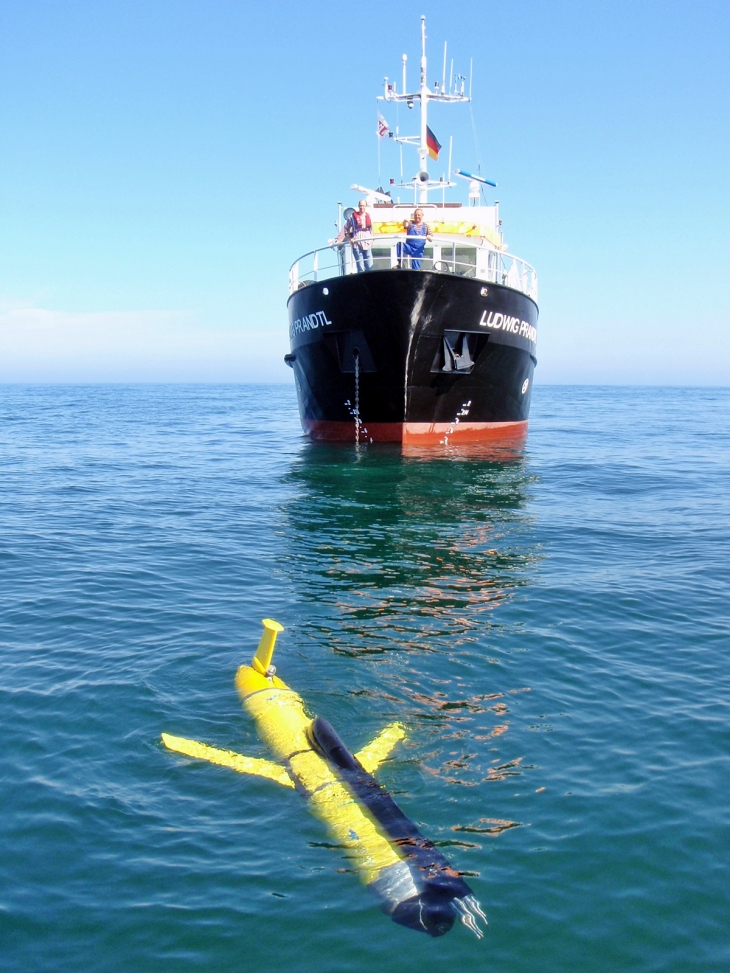
A glider in front of the Ludwig Prandtl, one of the research vessels from the Institute of Coastal Research. Image: Raimo Kopetzky
Several European-wide research groups have since joined together to form the EU project GROOM (Gliders for Research, Ocean Observation and Management), in which a network of gliders has been formed. Each group pursues its own projects but can benefit from others’ measurement data. With the mini-eddy observations, however, Carpenter and Merckelbach have entered new territory. They are the first to measure turbulence at wind farms with gliders and microstructure sensors.
Text: Tim Schröder / science journalist
Contact

Phone: +49 (0)4152 87-1546
E-mail contact
Phone: +49 (0)4152 87-1515
E-mail contact